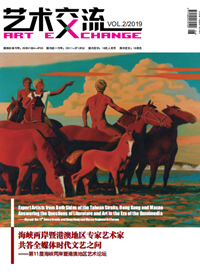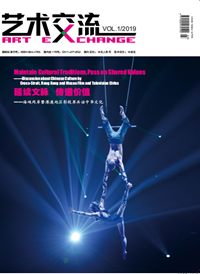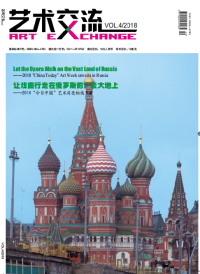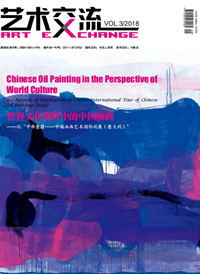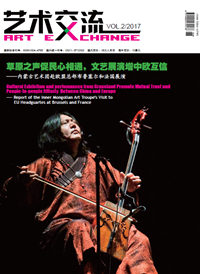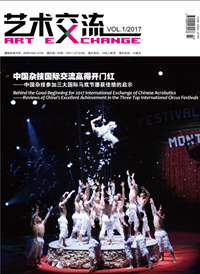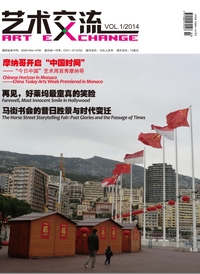
Traditional blue-and-white porcelain Craftsmanship. Xu Jianhua/Photo

Painting blue and white SHI Weiming\photo

A view of rough housing

Lapi SHI Weiming/photo

Lapi CHEN Heping/photo

"Guigu Down Mountain"large jar (Blue and white of Yuan Dynasty)
Surrounded by mountains with a mild humid climate, Jingdezhen, the Millennium Porcelain Capital is a small town in southern China with 2000-year history of smelting pottery and 1000-year history as the imperial kilns due to its abundance of high-quality raw material for making porcelain "kaolin", "songchai" for porcelain burning materials, convenient waterway traffic and many "craftsmen". Formerly known as "Xinping Town"” and "Changnan Town", this little town was named as Jingdezhen by a paper order issued and praised by ZHAO Heng, Emperor Zhenzong of Song Dynasty due to its production of fine-quality porcelain. For thousands of years, Jingdezhen porcelain has been decorated with four major names: "blue and white porcelain", "exquisite porcelain", "famile-rose porcelain," and "color-glazed porcelain," and was renowned due to four unique features, "four whites, one as a mirror, one as thin as paper, and the other as sound." It is famous for its unique features, "white as jade, bright as mirror, thin as paper, sound as loud as boulder".
Profound cultural heritage
Recalling the history of ceramics, the pottery activities in Jingdezhen has already begun as early as the Neolithic Age. According to archaeological findings, pottery relics of the Shang and Zhou period have been discovered in the Fuliang County area of Jingdezhen far from the Shang and Zhou dynasties. The types of pottery also include pottery mixed with sand, red pottery and etc. with decorative patterns as wheat ears, rice, meander, ombre patterns, laying a solid foundation for the origin of the Jingdezhen ceramic culture. The green and white porcelain of the Middle and Late Tang and Five Dynasties, the shadowy blue ware of the Song Dynasty, the blue and white porcelain of the Yuan Dynasty, the multicolored porcelain of the Ming dynasty, the light colorful porcelain of the Qing Dynasty and the unprecedented development of ceramics after the founding of New China have recorded the brilliant history of Jingdezhen. A number of famous masterpieces all truly recorded the history and achievements of ancient ceramics in Jingdezhen, embodying the rich content of town’s ecology and ceramic culture, including Record of Ceramics by JIANG Qi, Story of Ceramics by ZHU Yan, Illustration of Ceramics by TANG Ying, Ceramic Archives of Jingdezhen by LAN Pu, Ceramic Songs of Jingdezhen by GONG Shi and etc.
Jingdezhen is home to China’s most glorious historical relics of the porcelain industry. Since the 1950s, more than 150 ancient porcelain kilns at over 50 sites from the Five Dynasties to the Ming and Qing Dynasties have been uncovered in the urban area of Jingdezhen, a radius of 30 square kilometers in the east. The previous years have witnessed the discovery of the porcelain produced in the mid-Tang Dynasty in the southern kiln of Leping. The exclusive Jingdezhen ancient porcelain kiln site has a high historical position and academic value in terms of large scale, wide scope, high density, long period and rich ancient porcelain relics. They are the treasure of the history and culture of Jingdezhen ceramics, and more importantly, laying a solid foundation for Jingdezhen to become a worldrenowned porcelain capital.
Valuable Uniqueness of the Globe
As the Millennium Porcelain Capital, Jingdezhen remains most unique globally as an industry supporting a city for about 1,000 years. Its cultural value can be summed up in two "worldwide uniqueness": First, there are a large number of porcelains that have been preserved on the ground and underground in Jingdezhen, the quantity and quality of which are unique throughout the globe. Historically, Jingdezhen is a ceramic district of Guanyao porcelain and imperial kiln. Porcelain is made of mud and burned with firewood. The finished product rate is merely 20% to 50% even if it is by a great master of Bazhuang. Hence, it had to burn 10 or more at a time to make porcelain for the emperors, hoping that at least one piece was qualified for the palace. However, the defective products, which could not be taken to the private sector, were required to be broken on the spot immediately. There were rules to break the porcelain, first use a sharp subject to poke a hole at the bottom, then use a blunt instrument to break the body. Piled up from the early Ming Dynasty to the Qing Dynasty, these spectacular piles were connected to the production site at the time and gradually buried underground in the ancient town. The second “uniqueness” is that Jingdezhen still retains a complete porcelain production process system, raw materials, systems of fuel supply and porcelain sales, as well as a large number of ancient kiln sites, workshops, street alleys, buildings, stores, folk houses, government offices, wharfs and other remains. The two "“uniqueness" make Jingdezhen one of the world’s most valuable treasures of cultural heritage.
Strong Customs and Traditions
Over 1000 years of development , Jing de zhen has spontaneously formed a unique and rich ceramic industry custom culture. It includes production practices, industrial customs, language customs, and porcelain worship, labor combinations, wage distribution and management methods, such as the Fangpai, Datoupai, Kancaoxie, Guabiandan, Caichuang and etc. of industrial customs, Sending God of Food on 24th of lunar month, stay-up on Chinese new year’s eve, Lantern Festival, Taiping Kiln of Mid-Autumn Festival and others of festival customs, Sancai Liangxiang, Zhaojingzi, Shoudoujiao, Shehuo, Fenshui, Fu, Qian, Jian and others of language customs, Building temples to worship heroes of porcelain, ZHAO Gai, TONG Bin, JIANG Zhisi, ZHENG Zimu of porcelain worshipping…… such customs have been prevailing in the porcelain-making industry of the ancient town. These unique customs are deeply ingrained, handed down from generation to generation and circulating until now. They still affect the production and life of the citizens of Jingdezhen, with a profound influence on the development of the ancient town.
As the distribution center for the ceramic industry, Jingdezhen’s porcelain workshop culture has become the most characteristic culture of the ancient town. Since ancient times, the Jingdezhen porcelain workshops have showcased special uniqueness with integrated equipment. The workshop is normally composed of granary, inner courtyard, mud room and central room. The layout of its porcelain making process is also entirely based on the actual needs of hand-made porcelain production. The design of the workshop is very scientific, combining the technological requirements with the climate characteristics of Jingdezhen: facing south provides a long period of sunshine. It benefited from the southeast monsoon and made it possible to make billets on the wooden shelves of the drying racks with the most adequate drying conditions. Below the billet lies a small pond for storing rainwater, and the production water for kneading and muddy materials is taken from the pond. The entire workshop makes full use of the best combination of time and space and natural energy. This unique structure of the blank house could be considered a masterpiece in the architectural culture of China and the world at large.
Magic ceramics smelting
From the end of the Eastern Han Dynasty, Jingdezhen began to burn kiln and make porcelain with firewood, and it has been nearly 2,000 years to date. Jingdezhen porcelain is categorized as a high-temperature porcelain. How can it be burned above 1300 degrees Celsius? But it did burn to 1300 degrees Celsius. Because Jingdezhen’s township kiln is very large with high chimney, which pulls out a fire path in the kiln, resulting in 1300 degrees Celsius in the fire path. The rest is 1,200 degrees Celsius and 1,100 degrees Celsius….. Hence, the location of porcelain in the kiln is very particular. What kind of porcelain bodies, what position should be placed, all must be decided by the kiln master of loading according to the season, climate and their own experience without any instrument measurement and control. The entire huge kiln contains thousands of pieces of porcelain. Its mastery of burning is determined by the experience of the master of Bazhuang with purpose of make the pieces into beautiful porcelain. This magical technology has continued to this day, containing profound and wonderful ceramic cultural connotations.
Unique ceramic packaging
The packaging culture of Jingdezhen ceramics has been most unique since its history. In order to prevent the damage from the distant transportation, the earliest packaging method of porcelain was called "bean germination packaging". Each piece of porcelain was filled with sand and sprinkled with bean or wheat seeds, and then tied tightly into a bag with a rope. After the seeds germinate, the root buds are entangled together and a solid body is formed, which is ready for loading and shipping. The wisdom and of our ancestors is most evident. Afterwards, with the continuous development of the porcelain industry, the packaging methods are constantly being updated. However, traditional packaging that has lasted for thousands of years is still performed in straws, which can still be found until now. It was depicted in Bamboo Branch of Taoyang: By the goose-neck water bay, barges full of porcelain as hills, porcelain transported by ships, hope men could come back soon. It truly reflects the magnificent scale of ceramic package in ancient Jingdezhen.
Culture of porcelain trading
Distribution is an important part of the ceramic industry, and Jingdezhen ceramics trading culture has its origin here. In ancient and modern times, Jingdezhen porcelain has been traded and disseminated in three ways: shoulder-picking, carrying and shipping. Changjiang, the mother river, passes around the city and goes straight to the Yangtze River, and it assumes almost all the transportation tasks. The spectacular ancient scene "Ceramic workshops open by shores, attracting merchant ships by river" gave birth to the "Changnan Town pottery prevails across nations and distributed overseas", hence, the "silk and porcelain road" on the land and the "ceramics road" by sea have been formed gradually. A porcelain street with profound popularity has been designated in Jingdezhen to promote the free trade of porcelain. The street is paved with bluestone, porcelain shops lined up on both sides crowded with people bargaining for good prices. Porcelain stores and houses have been set up on the porcelain Street. In ancient times, most of the porcelain trade in Jingdezhen was carried out here. There is also the so-called "carrying on sale" style, namely Kaizhou shop. The trading culture of Jingdezhen ceramics has developed along with the advancement of the porcelain production with a rich flavor of this ancient town.
For thousands of years, Jingdezhen has been telling stories of China through its unique language of porcelain, with the ceramic culture itself evolving and developing constantly. Since the founding of New China, Jingdezhen ceramic art has entered an unprecedented period of prosperity, especially since the reform and opening up. Today's Jingdezhen still retains the most complete traditional handmade porcelain craftsmanship, profound ceramic culture and exquisite ceramic art have attracted numerous artists, who employ the porcelain as their carrier to promote "Chinese value, Chinese folk customs, Chinese Art, Chinese Elements and Chinese Symbols", and have created many porcelain paintings with Chinese ceramics cultural genes and aesthetics spirit. They expressed the ethos and pursuit of the artists with unique ceramic craft language and ceramic painting techniques and formed a new face of Chinese porcelain painting art the new era.



